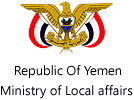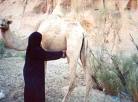
 http://www.english.hadhramaut.info
Scientists Research 'HealingMagic' Of Camel Milk
[The Source: coastweek.com/hadhramaut.info - 22/01/2010]
http://www.english.hadhramaut.info
Scientists Research 'HealingMagic' Of Camel Milk
[The Source: coastweek.com/hadhramaut.info - 22/01/2010]
 Scientists in Kenya are struggling to ascertain whether traditional believes that camel milk contains some healing properties are true or they are just myths.
Scientists in Kenya are struggling to ascertain whether traditional believes that camel milk contains some healing properties are true or they are just myths.
Anti-infection, anti-cancer, anti-diabetes are some of the alleged healing properties of camel milk.
The claims, if proved true, could mean a bright future for camel dairying as well as the medical industry.
There are growing scientific and commercial interests in such claims that have long been made about the camel milk.
The milk is acclaimed to cure diabetes, tuberculosis, stomach ulcers, gastro-enteritis cancer and even autism.
Scientists have found that there appears to be some scientific basis for some of the healing magic.
However, the experimental design has not always been sound.
According to some scientists, there are two ways to test the curative capacity of camel milk.
First is to have a rigorous experimental procedure and, with humans, double blind trials.The second is to have more information on the constituents of camel milk, specifically the components which could be responsible for the claimed medical properties.Close analysis of camel milk does show some medicinal potential.The milk protein, lactoferrin, which is present in large quantities (10 times higher than in cow milk), does have some anti- viral and anti-bacterial properties.Richard Gichuhi, a clinician based in Nairobi, said fermented camel milk is high in lactic bacteria, which has been shown to be effective against pathogens including Bacillus, Staphylococcus, Salmonella and Escherichia.Vitamin C content in camel milk is generally two times as that in cow’s milk."There are many examples of camel milk being prescribed to hospital patients to aid recovery from tuberculosis, Crohn’s disease and diabetes in some countries," he said.He said as a natural component of cow and human milk, lactoferrin is also found throughout the human body; it occurs in all secretions that bathe mucous membranes, such as saliva, tears, bronchial and nasal secretions, hepatic bile and pancreatic fluids.Exactly how lactoferrin functions is not entirely clear, but it is known to enhance the immune response, both directly and indirectly, in reaction to a wide range of immune challenges and it is an essential factor in the immune response in humans.The health-promoting properties of camel milk are a strong boost for sales and, in certain regions such as the Middle East, they are the driver for intensification of camel dairying.It is time for the camels to be managed well and probably have dairy camel operations in the future, just like the world has now with dairy cows.Trials are also proceeding to increase milk yields through intensification and breeding.But the big question remains:Will this system be able to produce the quantities of camel milk required especially if a potentially large new customer appears on the scene?There has been longstanding interest in the potential to harness the power of lactoferrin in treatments for certain illnesses, but now, a whole new constituent of camel milk is under scrutiny.The medical sector is very interested in the immunoglobulin of camel milk.This is the substance that contributes to immunity against infection.The immunoglobulin of camels is quite unique in the animal world.If successful, the research could lead to the development of a whole new family of vaccinations against some of the biggest killer diseases of our time, such as cancer.Not surprisingly, a leading pharmaceutical company has camel milk on its agenda of research.A medical breakthrough could bring about a huge leap in the respect shown for camels and those who keep them.It could be a solution for camel development, but there is also a risk that the pharmaceutical industry could isolate the molecule they are interested in and synthesize it artificially.
|